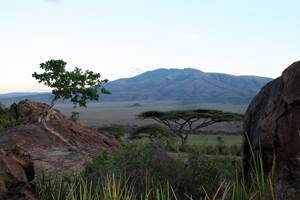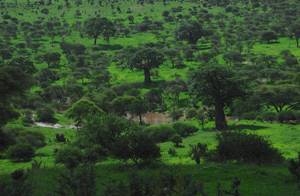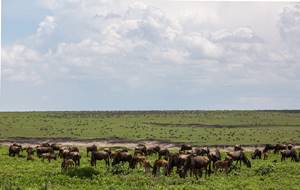Nestled amidst the rugged terrain of Rajasthan, India, Ranthambore National Park is a haven for wildlife enthusiasts and nature lovers alike. Covering an area of approximately 400 square kilometers, this renowned national park is famous for its population of majestic Bengal tigers.

Home to a diverse range of flora and fauna, Ranthambore boasts an enchanting landscape that combines dense forests, grassy meadows, and serene lakes. With its historical significance as a former hunting ground for Maharajas, the park also features ancient ruins and imposing forts that add a touch of grandeur to its natural beauty.
Best Time To Visit Ranthambore National Park
The best time to visit Ranthambore National Park is between October and April, when the weather is pleasant and wildlife sightings are at their peak. During this period, the park remains open for tourists to explore its diverse flora and fauna.
The months of October and November mark the end of monsoon season, resulting in lush green landscapes and ample water sources, attracting a wide range of animals.
As winter approaches, from December to February, the temperatures become cooler making it ideal for wildlife safaris. Moreover, this time offers better visibility due to sparse vegetation.
However, it is important to note that the park remains closed during monsoon season (July-September), as heavy rainfall makes it difficult for visitors to navigate the terrain.
Wildlife And Safari Experience In Ranthambore National Park
The Wildlife and Safari Experience in Ranthambore National Park offers an extraordinary opportunity to witness the majestic creatures that call this reserve their home. Spread across 1,334 square kilometers in Rajasthan, India, the park is renowned for its thriving population of Bengal tigers. Visitors can embark on thrilling safaris, led by experienced guides who expertly navigate through the dense forests and grasslands.
As you venture deeper into the park’s heartland, keep your eyes peeled for other magnificent wildlife including leopards, sloth bears, deer species, and a plethora of bird species. The park’s diverse ecosystem provides an enchanting backdrop for nature enthusiasts and photographers alike. An encounter with these fascinating creatures amidst their natural habitat is truly an unforgettable experience.
Tips For Planning Your Trip To Ranthambore National Park
1. Book your safari in advance: Ranthambore National Park is a popular destination, and the limited number of permits means they get booked quickly. Ensure you secure your spot by booking well in advance.
2. Choose the right time to visit: The park is closed during the monsoon season (July to September). The best time to visit is from October to June when wildlife sightings are more frequent.
3. Opt for multiple safaris: Increase your chances of spotting elusive tigers and other wildlife by planning for multiple safaris during your stay.
4. Dress appropriately: Wear comfortable clothing and sturdy shoes suitable for outdoor activities. Don’t forget a hat, sunglasses, sunscreen, and insect repellent.






